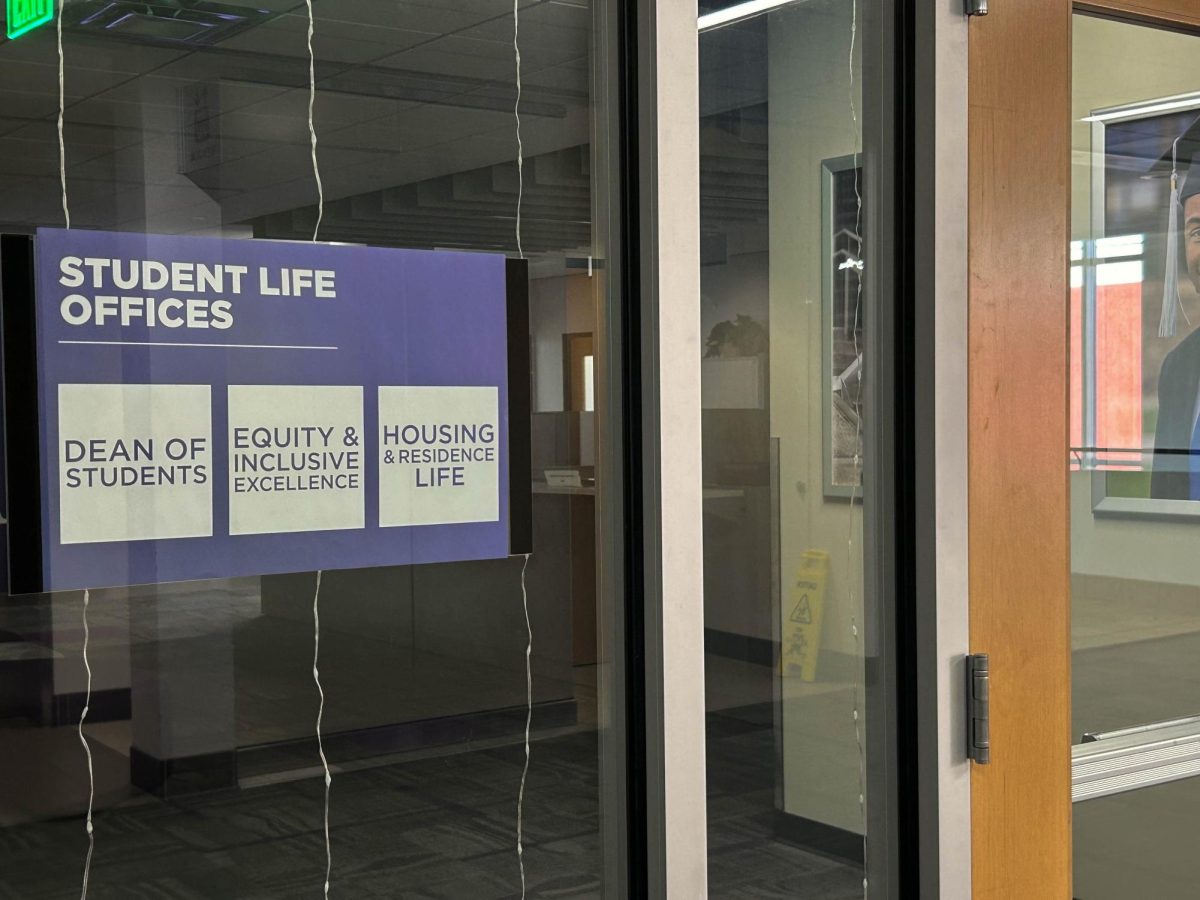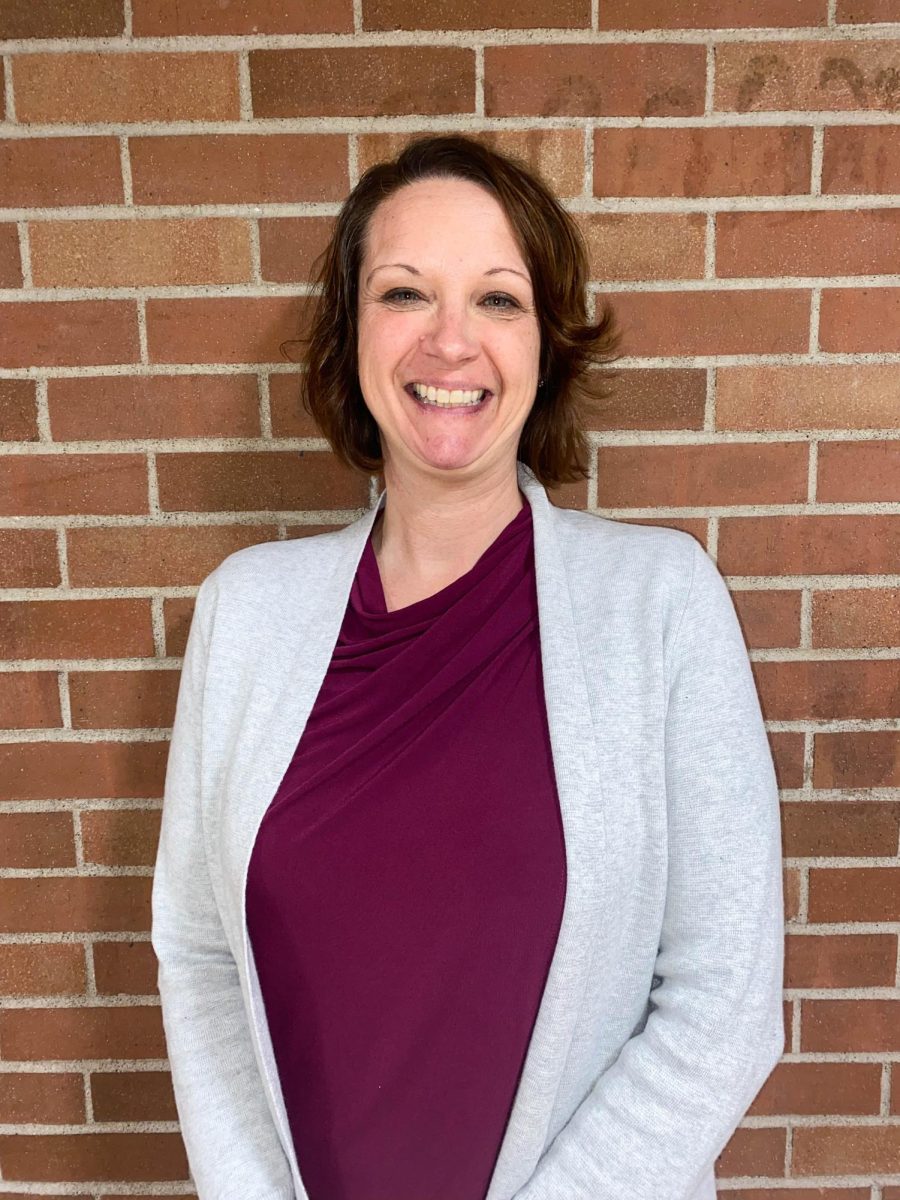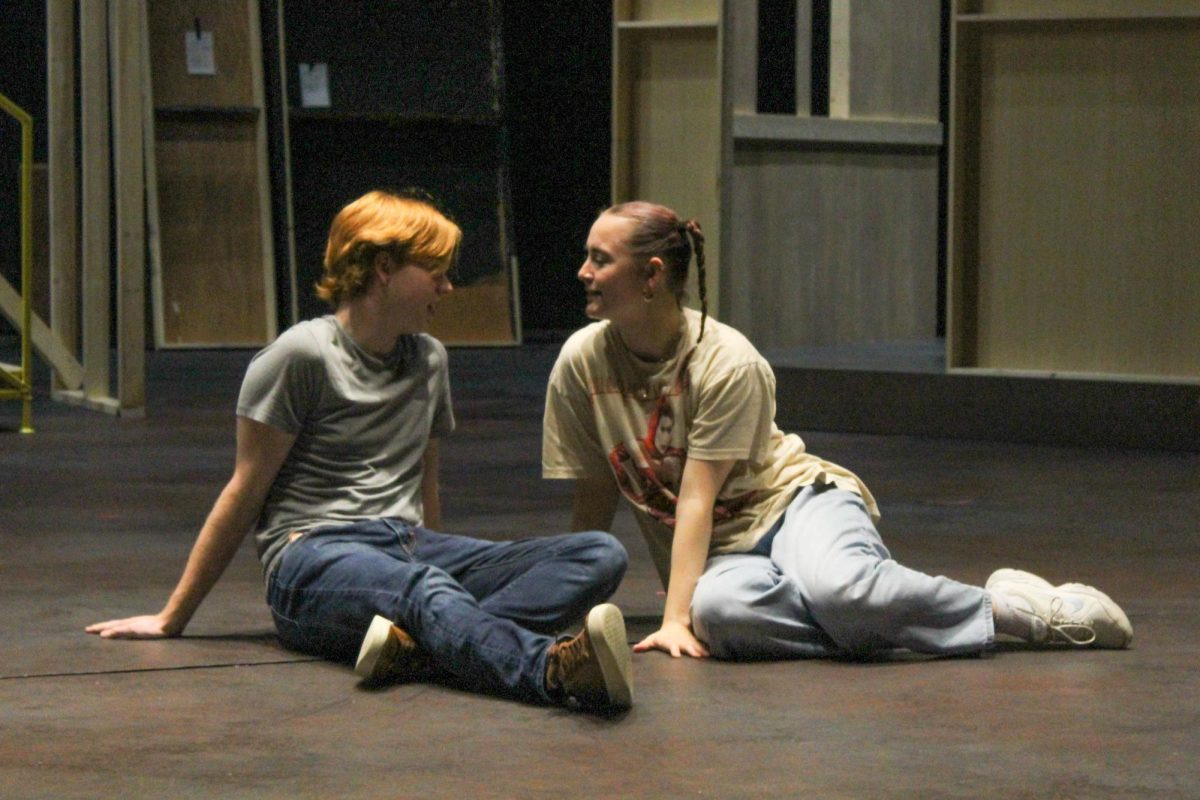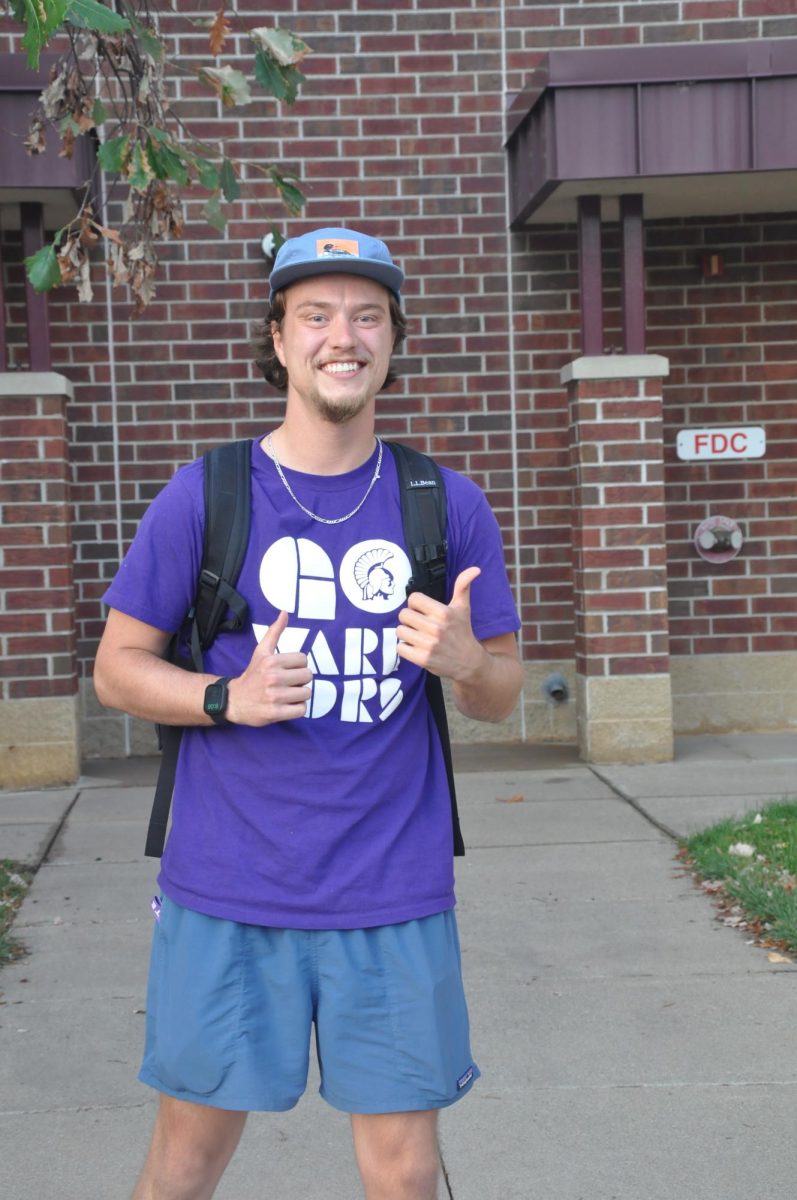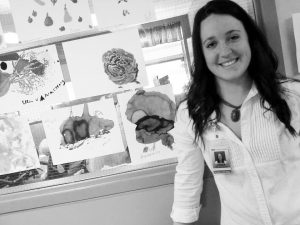
HANNAH JONES
Hannah Jones/ Winonan
Winona State University senior Lydia Garlick walked down the hallways of Lake Winona Manor, saying hello to residents in wheelchairs as she went. Having worked there since this summer, she knew each of them by name.
“We usually do crafts,” she said. “Today we’re picture frame decorating.”
Garlick, a psychology major and an art minor from Eau Claire, Wis., will not graduate until December. In spite of this, she’s already doing the job she wants to do for the rest of her life: facilitating therapy through art.
“I never envisioned myself working with old people, but now that I do, it makes a lot of sense,” she said.
Garlick’s career path has never been straightforward. When she was growing up in Eau Claire, Wis., she wanted to be a doctor, mostly for the “blood and guts and brains” that were a chief part of her interests.
In middle school, she wanted to be a sex therapist, but on account of her mother discouraging her from telling people that fact, Garlick began to choose a different path.
When she was a senior in high school, she wasn’t even certain if she wanted to go to college. When she eventually did, she followed her passions for art and neuroscience, trying to find a way to marry the two of them. That’s when she found art therapy.
By that point, she was too far into her undergraduate career to consider spending the money and time necessary for years of extra schooling required for the position.
She stumbled onto the therapeutic recreation assistant job through a roommate’s experience in the position and jumped at the chance to apply. She got the job and started putting in as much time as she could, weekdays and weekends. With 1,500 hours of work under a certified therapeutic recreation specialist, she can get certified and become an art therapist herself.
She stopped by a set of paintings on a classroom window, which were the result of a craft project Garlick led involving watercolors frozen into ice cubes. The residents could paint by sliding the melting cubes across the paper.
“We have one gentleman on a liquid diet that eats every craft supply he comes into contact with,” she said. She pointed to one painting with an explosive red blotch, which had gotten its distinctive look when the resident placed his ice cube in his mouth and spat it onto the page.
“It turned out good,” she said.
Garlick has stopped this same resident from spooning globs of nontoxic paint into his mouth. He didn’t exactly appreciate the intervention.
“He just yelled, ‘Why won’t you let me eat nice things?’” Garlick said, laughing. “It was pretty scary.”
Garlick has a sense of humor that is essential to her job, mostly because when it’s not funny, it’s often sad.
Her residents suffer from dementia and bodies that are physically failing them. They often can’t walk or don’t understand why they’re there.
Sometimes residents don’t understand why they can’t go home to their families. Sometimes they don’t understand that their families are already dead.
“Some of these people are literally all alone,” she said. “I’m here for this person.”
The bottom line of Garlick’s passion for her job is a passion for the people she helps every day.
While she leads these art classes, Garlick is learning from the residents: people who have lived to be 105 years old, who can recall all the different shapes Sugar Loaf has been, who rode around in their boyfriend’s Model A Fords, fought in the Vietnam War, lived without indoor plumbing.
People who ask themselves now, all the time, “Where did my time go?”
Garlick has learned to go with the flow and live in the moment, trusting where her passions are taking her.
“I would never want another job,” she said. “I love it.”





